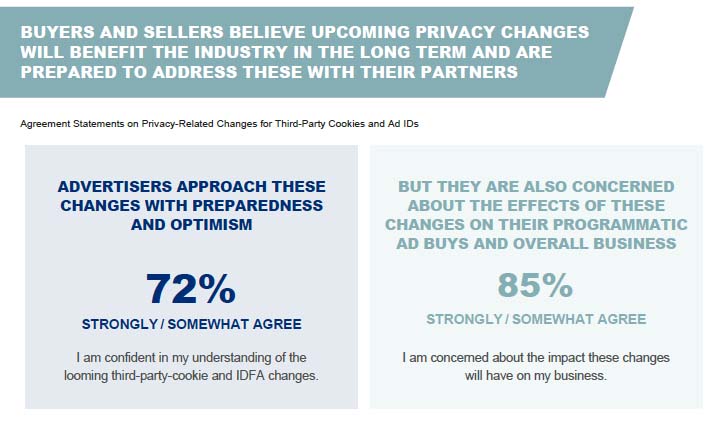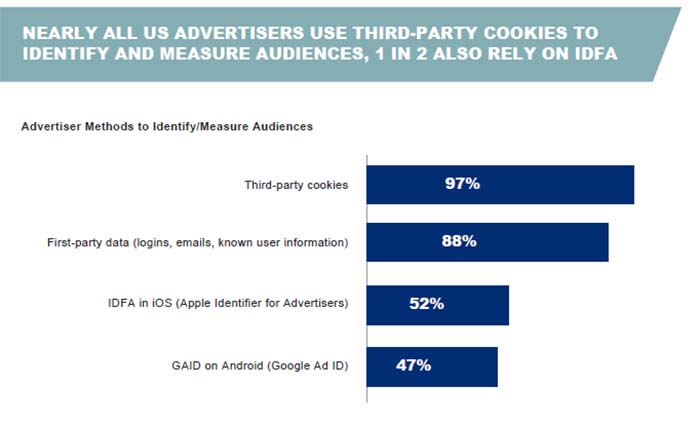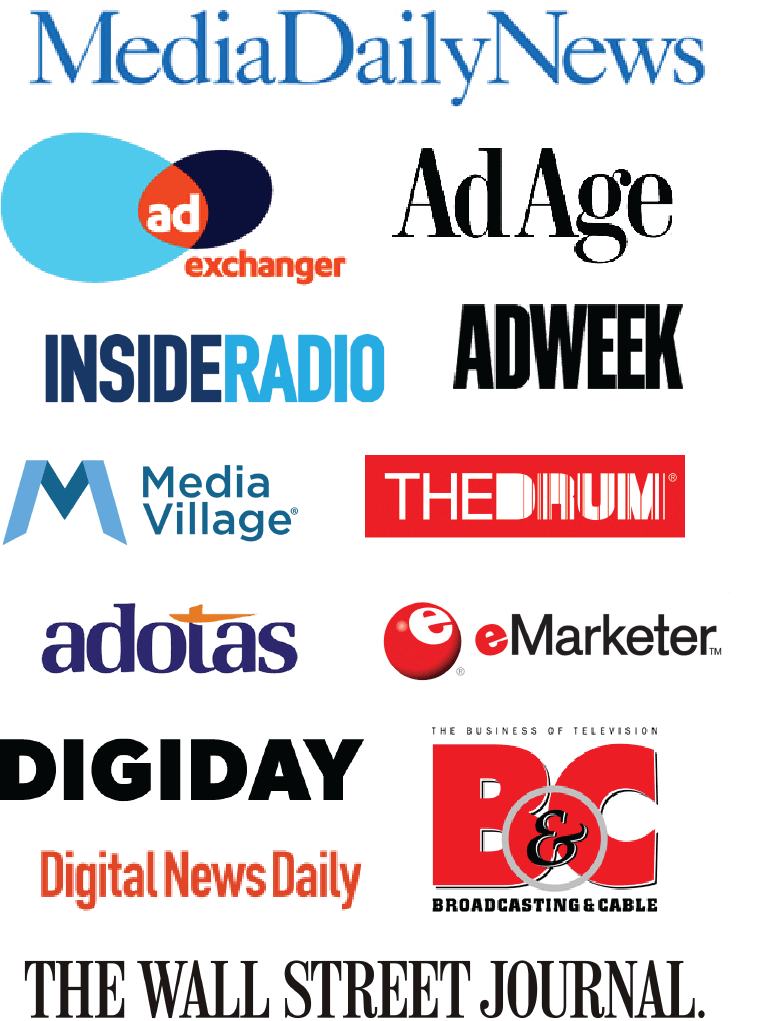THE IDENTITY LANDSCAPE IS FULL OF OPPORTUNITY FOR ADVERTISERS
Advertisers are no strangers to the pressures of privacy regulation and navigating measurement challenges. At present, many are focused on managing the fallout from Apple’s update to iOS 14, which now requires consumers to opt-in to share their “identifier for advertisers,” or IDFA. Even more are actively working to anticipate significant disruptions to their ad targeting and measurement strategies as Google plans to follow suit with its Android ID later this year and Chrome’s phase-out of third-party cookies in 2023.

In the short term, advertisers are honing their audience identification, targeting and measurement practices for a post-MAID and third-party cookie world. While these changes concern advertisers in the near term, in our April 2021 survey of 150 US advertisers, Advertiser Perceptions found 72% of advertisers agreed these changes would benefit the industry in the long run.

And many are ready to take on these challenges. About three-quarters of US advertisers say they are prepared to address the deprecation of these identifiers internally and with vendors, partners and publishers. An equal portion also feel confident in their understanding of these changes. As of May 2021, however, just 2 in 5 had already implemented solutions to address audience targeting and measurement post third-party cookies and MAIDs.
“It’s important for advertisers to constantly be working with their vendors. We’re doing an audit of our revenue right now and what percentage is third-party, and we’re starting to put some plans in place.” – MARKETING DIRECTOR, FINANCIAL SERVICES
STRONG PARTNERSHIPS ARE ESSENTIAL TO SOLVING FOR IDENTITY
Advertisers may be prioritizing first-party data, but they aren’t blind to the fact that they will need to pull in added partners and solutions providers to properly execute core targeting and measurement practices. About half of advertisers are currently establishing or re-establishing direct relationships with publishers.
“We’ve been doing audits across all our clients as to where their spend is focused, what types of partners they are working with and we’re talking with each partner to understand their approach,” said a VP at an agency. “The walled garden partners sit on a treasure trove of first-party data, and that’s positioned them a little bit better in the space to be able to utilize those offerings.”

AUDITING PARTNERS AND PRACTICES IS THE FIRST STEP TO FUTURE-PROOFING
While the walled gardens are an attractive, short-term solution, advertisers also plan to approach other advertisers and agencies to leverage their first-party data. Many are looking to industry-backed ID consortia, data clean rooms and privacy sandboxes to address future needs.
“It’s important for advertisers to constantly be working with their vendors,” said one marketing director at a financial services firm. “We’re doing an audit of our revenue right now and what percentage is third-party, and we’re starting to put some plans in place.”
In addition to relying on first-party data, four in five plan to turn to third-party partners to take advantage of their ID graphs. 87% of advertisers say they will lean more heavily on ad tech and martech partners to provide the necessary tech support and assistance to meet new compliance standards and campaign needs.
CONCLUSION
Heading into the future, proactive advertisers are ahead of the game. The market will belong to those who have assessed the impact to their business and begun to leverage solutions that can help brands find their audience in 2023 and beyond.
These Highlights Are Based On Our Latest Research
Advertiser Perceptions’ Preparing For A Future Without Third-Party Cookies & IDFA Report provides insights into how buyers and sellers are approaching the necessary changes they will need to make to address their data and privacy needs and succeed in their third-party cookieless marketing and selling. Contact us at [email protected] for more information.

